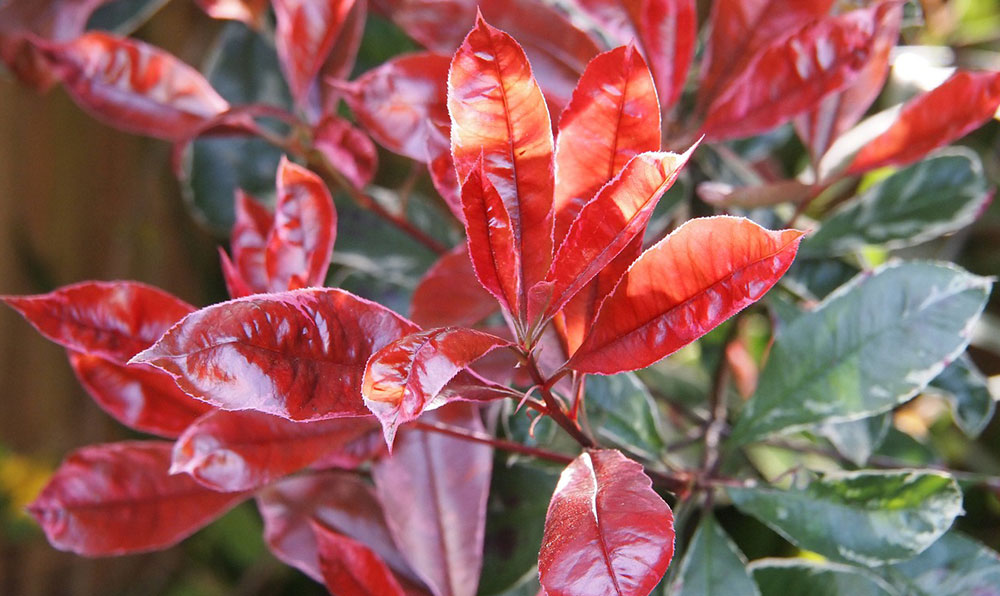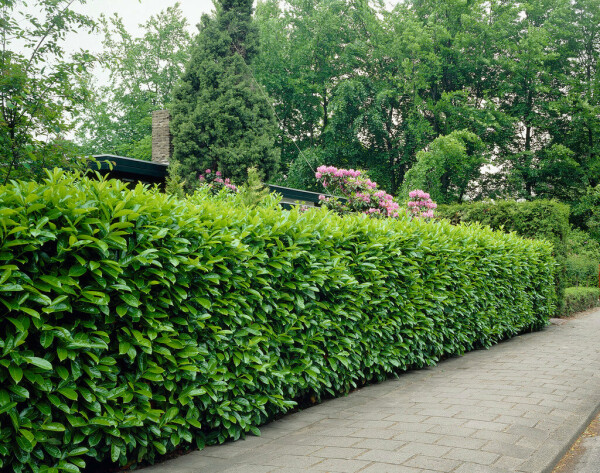Best Hedging Plants For Inspired Gardens
Best Hedging Plants For Inspired Gardens
Blog Article
Best Hedging Plants For Regular Pruning
Improve your garden's allure with lavish hedge varieties such as Yew (Taxus), Thuja, Laurel, Photinia, and Bamboo, commemorated for their structural stability and environmental advantages.
Yew and Thuja offer evergreen protection and winter season durability, while Laurel offers fast growth and broad, fragrant leaves.
Photinia adds seasonal beauty with its vibrant red foliage, and Bamboo provides a low-maintenance, serene ambiance.
These hedges improve air quality, reduce sound, and create tranquil, private spaces.
Appropriate planting, spacing, and upkeep ensure vigorous development and ecological consistency.
Check out how these rich varieties can elevate your garden's appeal and well-being.
Secret Takeaways
Transform Your Garden With Lush Hedge Varieties
- Select Yew for its dense, evergreen development and unrivaled longevity.
- Opt for Laurel for its quick growth and broad leaves, guaranteeing quick privacy.
- Select Photinia for its lively seasonal foliage, which turns a striking dark red.
- Utilize Bamboo for a low-maintenance, winter-hardy hedge with visual appeal.
- Area plants 2-3 per meter and prune frequently for optimal growth and health.
Popular Hedge Plants
When changing a garden with rich hedge ranges, it's vital to think about popular hedge plants such as Yew, Thuja, Laurel, and Photinia due to their special attributes and benefits.
Yew (Taxus) is extremely respected for its durability and thick, green growth, making it a prime choice for withstanding landscapes.
Thuja is noted for its evergreen foliage and robust winter durability.
Photinia adds seasonal vibrancy with red leaves that darken gradually, producing dynamic visual appeal.
Laurel uses quick development and fragrant, broad leaves, perfect for fast personal privacy.
In Addition, Bamboo is an outstanding choice for ambiance, using a low-maintenance, winter-hardy alternative that boosts the garden's visual with its stylish, swaying canes.
These selections deal with a range of horticultural needs and preferences.
Advantages of Garden Hedges
Garden hedges offer a wide range of benefits, making them an important addition to any landscape. These natural barriers are economical to execute and provide substantial wind security, improving air flow and contributing to noise decrease. The dense foliage of hedges like Thuja and Beech ensures privacy by blocking visibility, developing a remote and serene environment.
Hedges likewise play an important role in microclimate guideline, offering a steady environment that promotes plant growth and decreases temperature level fluctuations. Their complex leaf structures filter pollutants, enhancing air quality and contributing to a much healthier garden ecosystem.
Furthermore, hedges master noise reduction, taking in and deflecting sound waves to lower ambient noise levels. This double functionality of offering both visual and acoustic personal privacy enhances the general harmony and aesthetic appeal of any garden.
Planting and Maintenance Tips
For a successful hedge, precise preparation of the planting location is essential. Make sure the soil has proper pH and drainage to support strong root advancement.
Area the plants appropriately for the selected types. Water the hedge frequently throughout its preliminary growth phase, changing as required with seasonal modifications.
Implement a methodical bug control and disease prevention technique, utilizing chemical or organic treatments when required. Routinely check for aphids, termites, and fungal infections.
Apply mulch to retain moisture and suppress weeds. Seasonal pruning promotes dense development and air circulation, necessary for plant health.
Following these guidelines will help you cultivate a vibrant, properly maintained hedge that improves the appeal of your garden.
Spacing and Trimming Guidelines
Spacing and Cutting Guidelines
Correct spacing and trimming are essential for cultivating healthy, visually appealing hedges. Adequate spacing guarantees each plant gets enough nutrients, light, and air flow.
Follow these standards for optimum hedge upkeep:
- Spacing: Position hedge plants 2-3 plants per meter to motivate robust development.
- Pruning Strategies: Routine pruning is essential for keeping wanted hedge height and shape. Cut brand-new development in summertime and cut back older wood during winter.
- Seasonal Care: Change cutting schedules and approaches according to seasonal requirements to make sure plant health.
- Hedge Height: Frequently screen and trim to maintain the wanted hedge height and attain uniform aesthetic appeals.
Adhering to these steps will guarantee your hedge grows, improving both the appeal and functionality of your garden.
Choosing the Right Hedge
Picking the Right Hedge
Choosing the appropriate hedge includes assessing factors such as fully grown height, foliage density, and ecological durability. Successful hedge plant choice needs understanding each types' growth characteristics and site-specific flexibility.
For example, Yew (Taxus) uses outstanding longevity and thick growth, while Thuja is notable for its winter season resilience. In addition, considering upkeep requirements is essential; fast-growing types like Laurel or Privet demand routine trimming, whereas low-maintenance alternatives like Bamboo or Ivy may be more effective for those seeking very little upkeep.
Ecological aspects such as soil type, light availability, and moisture conditions must also direct the selection process. This cautious method guarantees the chosen hedges will flourish, providing both practical and aesthetic advantages to the garden landscape.
Shipment and Planting Guidance
To ensure your hedge plants thrive, they need to be delivered by specialized carriers and planted promptly upon arrival.
Follow these important actions for successful planting:
- Soil Preparation: Enhance the soil with natural matter to enhance drain and nutrient material.
- Planting Depth: Produce a trench two times the width and equivalent to the depth of the root ball.
- Watering Techniques: Water thoroughly after planting, keeping the soil consistently damp however not filled.
- Mulching: Apply a layer of mulch to retain moisture and reduce weeds.
Consumer Support and Service
Given the important function of timely help in horticultural pursuits, our client assistance group is readily available six days a week through telephone, email, and social networks to offer professional advice and swiftly attend to any issues. Their devotion to quick reaction times guarantees consumer satisfaction by dealing with queries connected to plant health, optimum planting methods, and maintenance schedules.

Accessibility
----------------------
Within 24 hours
This thorough support group, strengthened by an outstanding 9.3/ 10 consumer rating, highlights our commitment to enhancing the gardening experience for each customer.
Often Asked Concerns
How Long Does It Consider Hedge Plants to Develop?
Hedge plants normally need one to 3 years to end up being fully developed, with the specific period differing by types and growing conditions.
Reliable care throughout this critical period is vital for robust development. Consistent watering, vigilant weed control, and appropriate fertilizer application are pivotal in promoting strong root development.
For instance, fast-growing types like Laurel may establish quicker, while slower-growing varieties such as Yew might take longer. Persistent maintenance accelerates the establishment process, leading to healthy and dense hedges.
What Are the Best Hedge Plants for Personal Privacy?
The concern of the very best hedge plants for privacy involves examining evergreen and deciduous alternatives.
Evergreen hedges like Thuja, Laurel, and Cypress supply year-round coverage, making sure constant personal privacy.
On the other hand, deciduous hedges such as Beech provide seasonal privacy, shedding leaves in cooler months.
Secret maintenance suggestions for privacy hedges consist of routine trimming, fertilizing in spring, and correct spacing-- usually 2 to 3 plants per meter.
Furthermore, constant watering and thorough weed elimination are essential for promoting healthy, dense growth.
Can Hedge Plants Attract Wildlife to My Garden?
Yes, hedge plants can bring in wildlife to your garden by providing essential advantages like shelter, food, and nesting sites, therefore improving local biodiversity. Yew, holly, and laurel are excellent for bring in birds, while ivy supports a variety of pests.
However, it is necessary to note that there are some downsides, such as increased maintenance to manage bugs and regular maintenance. Carefully choosing and preserving hedge ranges can help stabilize these downsides and advantages, ultimately promoting a sustainable and vibrant community in your garden.
Are There Any Flowering Hedge Plants Available?
Yes, there are flowering hedge plants offered that can enhance the charm of your garden.
For instance, Elaeagnus, likewise known as Olive Willow, produces fragrant white flowers in the fall, including a touch of sophistication.
Photinia, another popular option, showcases dynamic red leaves that develop into a rich green, producing a vibrant visual effect throughout the seasons.
To guarantee these plants flourish, it's vital to practice appropriate pruning techniques and seasonal maintenance, such as cutting brand-new development in the summer season and cutting down in the winter.
These measures will help keep the health and visual appeal of your flowering hedges.
How Do I Avoid Insects in My Hedge Plants?
To avoid bugs in hedge plants, use natural pest control techniques and keep correct hedge care. Introduce beneficial bugs like ladybugs, which take advantage of hazardous bugs, to create a balanced community.
Routinely examine your hedges for signs of infestation and without delay remove any afflicted parts to avoid the spread. Ensure the health of your hedges by applying balanced fertilizers and supplying adequate water.
Make use of mulching to maintain soil moisture and correct spacing to lower plant tension and promote robust growth. These practices collectively help in reducing insect concerns and preserving a healthy hedge.
Conclusion
In essence, picking the ideal hedge ranges such as Yew, Thuja, and Laurel can change more info any garden into a tranquil haven. These plants provide year-round plant, enhance visual appeal, and deal practical benefits like sound decrease and wind protection.
Appropriate planting techniques, accurate spacing, constant watering, and seasonal cutting are essential for optimum development.
Dependable shipment services and professional customer assistance ensure a smooth experience from purchase to planting, making it simpler than ever to raise your outside area.
Garden hedges offer a plethora of advantages, making them a valuable addition to any landscape. These natural barriers are cost-effective to carry out and provide substantial wind defense, enhancing air blood circulation and contributing to sound decrease. The dense foliage of hedges like Thuja and Beech ensures personal privacy by obstructing presence, developing a tranquil and secluded environment.

Pruning Techniques: Regular pruning is important for maintaining wanted hedge height and shape. Cut new development in summertime and cut back older wood during winter.
Report this page